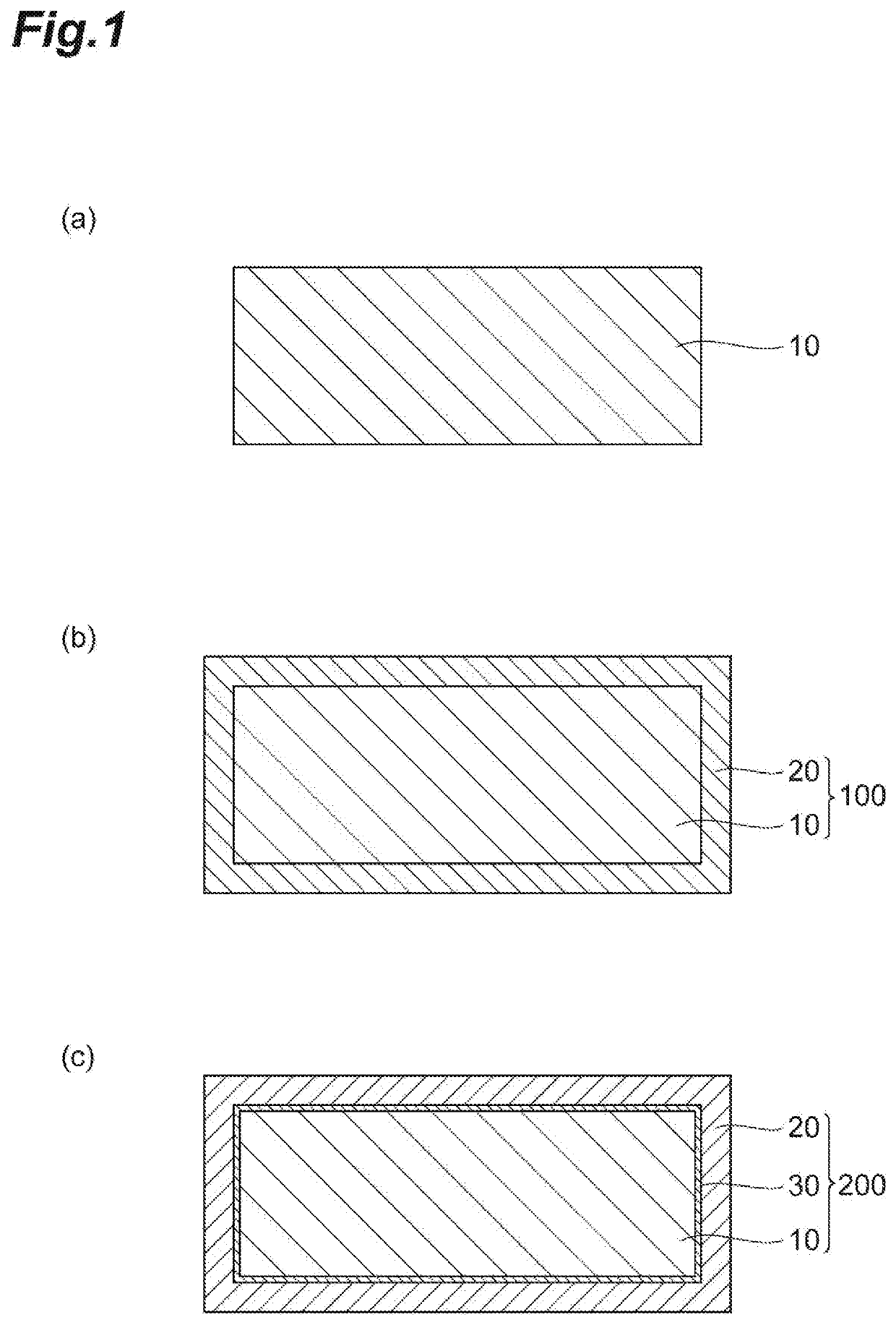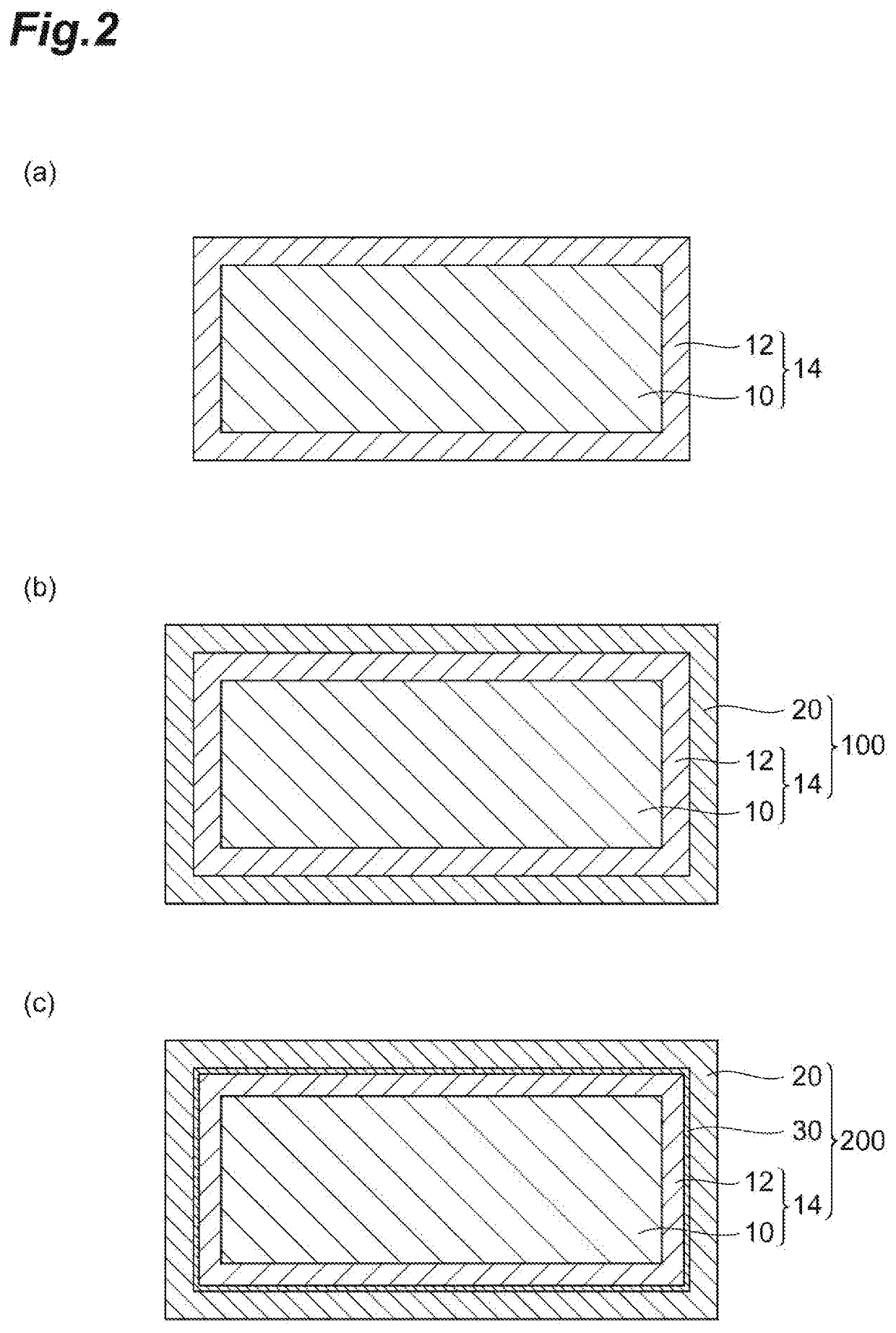Reactive coating material for steel material providing high corrosion resistance
- Summary
- Abstract
- Description
- Claims
- Application Information
AI Technical Summary
Benefits of technology
Problems solved by technology
Method used
Image
Examples
example 1
[0100]
[0101]0.05 parts by mass of barium hydroxide, 5 parts by mass of aluminum sulfate, 5 parts by mass of nickel sulfate, 5 parts by mass of magnesium sulfate, 10 parts by mass of an extender / coloring pigment, and 74.95 parts by mass of a polyvinyl butyral resin (a resin X shown in Table 4) were mixed with appropriate amounts of xylene, toluene, and isopropyl alcohol so that a viscosity of the coating material was 200 to 1,000 cps at 20° C., thereby obtaining a coating material. Further, the extender / coloring pigment is formed of barium sulfate and calcium carbonate as the extender pigment, and red iron oxide, carbon (inorganic pigments), and phthalocyanine blue (organic pigment) as the coloring pigment, respectively, in which both the pigments were included at equivalent parts by mass. The compositions of the solid content of the coating material are shown in Table 5.
[0102]
[0103]A specimen (I) shown in Table 1 below, having a dimension of 30×25×5 mm, was prepared. Table 1 shows t...
examples 731 to 750
[0110]A coating material of Examples 731 to 750 was obtained in the same manner as in Example 1, except that the composition of the coating material was changed to those described in Table 78 and Table 79. Incidentally, the amount of the solvent in the coating material was appropriately adjusted so that the viscosity of the coating material at 20° C. as determined using a B-type viscometer was 200 to 1,000 cps. In addition, in Examples 731 to 750, coated steel materials for an acid resistance test and a chloride resistance test were obtained in the same manner as in Example 1, except that the specimen of the steel material, the pretreatment method, and the thickness of the coating film were changed to those described in Table 78 and Table 79 to form a coating film, and a topcoating film (corresponding to the layer of (A)) provided by further applying topcoating materials onto the coating film so that the thickness and the moisture permeability were as described in Table 78 and Table...
examples 751 to 760
[0111]A coating material of Examples 751 to 760 was obtained as shown in Table 80 in the same manner as in Example 204, and thus, a coating film was formed on a surface of a specimen. The amount of a solvent in the coating material was appropriately adjusted so that the viscosity of the coating material at 20° C. as determined using a B-type viscometer was 200 to 1,000 cps. In addition, in Examples 751 to 760, coated steel materials for an acid resistance test and a chloride resistance test were obtained in the same manner as in Example 204, except that a topcoating film (corresponding to the layer of (B) in Examples 751, 753, 755, 757, and 759, and corresponding to the layer of (C) in Examples 752, 754, 756, 758, and 760) provided by applying a topcoating material having the composition described in Table 81 onto the coating films with the thickness and the resin system as described in Table 80, respectively, was formed.
PUM
| Property | Measurement | Unit |
|---|---|---|
| Temperature | aaaaa | aaaaa |
| Percent by mass | aaaaa | aaaaa |
| Percent by mass | aaaaa | aaaaa |
Abstract
Description
Claims
Application Information
 Login to View More
Login to View More - R&D
- Intellectual Property
- Life Sciences
- Materials
- Tech Scout
- Unparalleled Data Quality
- Higher Quality Content
- 60% Fewer Hallucinations
Browse by: Latest US Patents, China's latest patents, Technical Efficacy Thesaurus, Application Domain, Technology Topic, Popular Technical Reports.
© 2025 PatSnap. All rights reserved.Legal|Privacy policy|Modern Slavery Act Transparency Statement|Sitemap|About US| Contact US: help@patsnap.com


